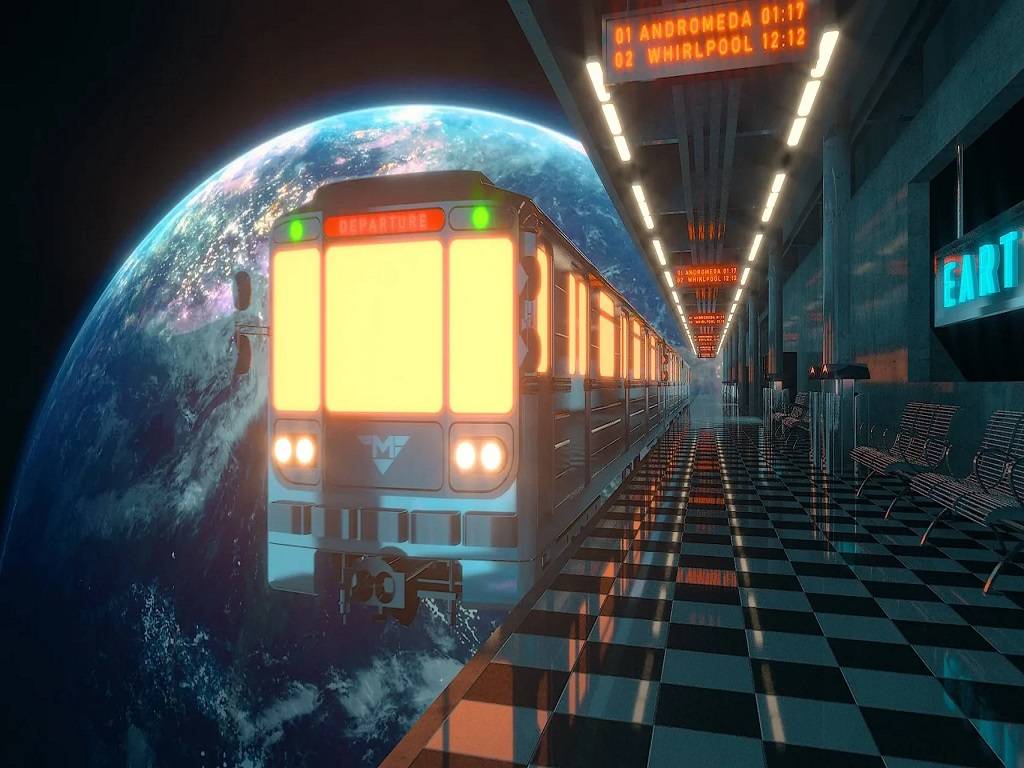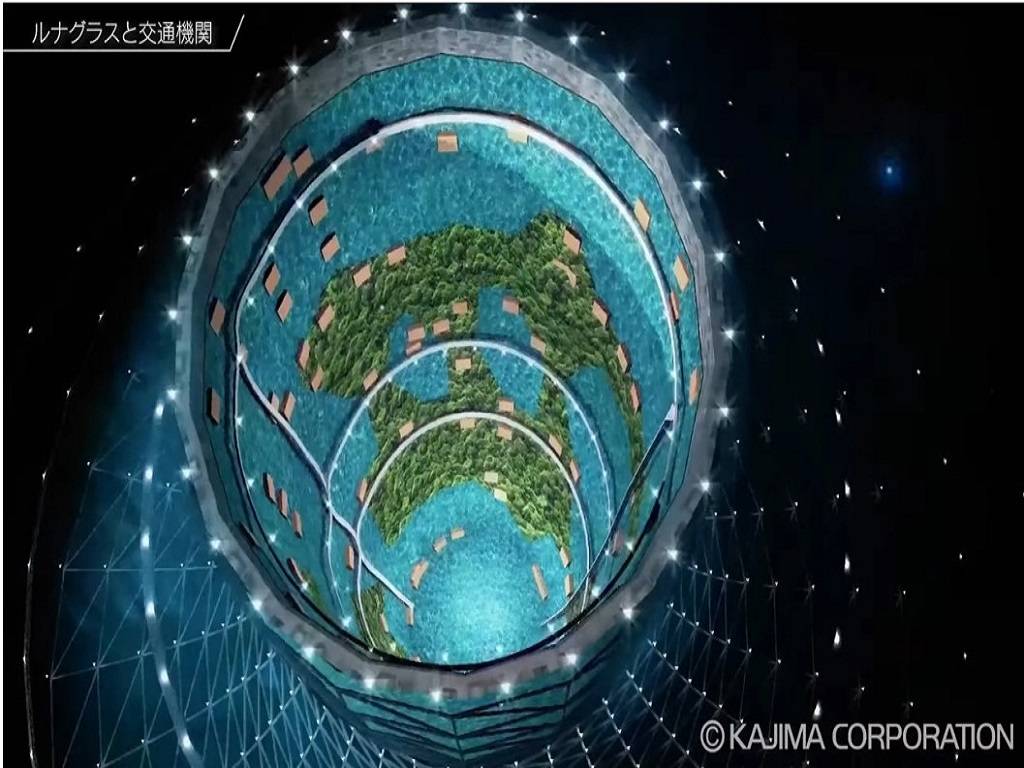
As the world watched the commencement of a second Space Race, researchers at Kyoto University in Japan unveiled the construction of an artificial space home and inter-planetary trains connecting the Earth, Moon, and Mars in conjunction with Kajima Construction.

The team disclosed its futuristic ambitions to construct the 'Glass' habitat living structure that duplicates Earth's gravity, topography, and atmosphere to avoid the 'weakening' of the human musculoskeletal system in zero and low gravity conditions in a press conference last week.
With the new space contest becoming the defining event of our times as the United States revives its moon missions, China begins exploring Mars, Russia, and China are preparing a joint lunar base.
The 'Glass' – Another Earth on the Moon and Mars!
Kyoto University and Kajima Construction plan to construct 'The Glass,' a conical living building with artificial gravity that would include public transit, grassy spaces, and water bodies similar to those found on Earth.
Their illustrated presentation at a press conference last week showed a giant rotating cylindrical upright structure showcasing rivers, lakes, and park-like amenities for humans to live in when they are not outside the planet's geography.
It is an inverted cone that rotates to provide a centrifugal force that mimics the influence of Earth's gravity. Researchers want to create a smaller prototype version of the structure, which stands over 1,300 feet tall and has a radius of 328 feet, by 2050.
The ultimate form, according to The Asahi Shimbun, will take approximately a century to build and operate. The habitat on the moon will be known as the 'Lunaglass,' while the home on Mars will be known as the 'Marsglass.'
Space Express: A New Era of Interplanetary Transportation
The team of researchers foresees the 'Hexatrack,' an interplanetary transportation system that maintains a gravity of 1G even during long-distance flight to offset the consequences of extended exposure to low gravity.
Hexacapsules are hexagonal-shaped capsules with a movement mechanism developed for the center section.
A small mini-capsule (radius of 15 meters) travels between the Earth and the Moon, while a huge capsule (radius of 30 meters) travels between the Earth and Mars and the Moon and Mars.
The big capsule is built in such a way that the outer frame 'floats,' presumably utilizing electromagnetic technology similar to that used on Maglev trains in Germany and China.
The radial center axis is used to convey individuals from each vehicle. The movement between the Moon and Mars is 1G (radius 30 meters, 5.5 rounds per minute). The railroad's Earth stop will be known as the Terra Station, and a train traveling on a standard gauge track with six carriages will be known as the Space Express.
















